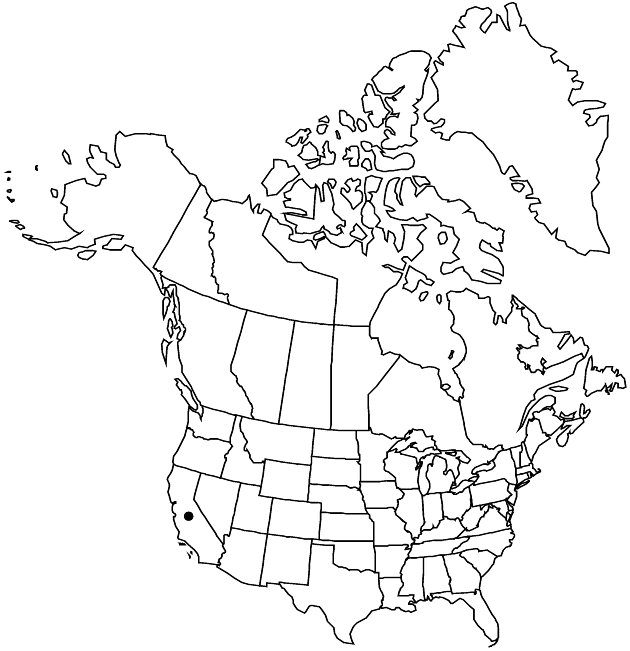Xylorhiza orcuttii
Pittonia 3: 48. 1896.
Common names: Orcutt’s woody-aster
Basionym: Aster orcuttii Vasey & Rose Bot. Gaz. 16: 113. 1891
Synonyms: Machaeranthera orcuttii (Vasey & Rose) Cronquist & D. D. Keck
Shrubs, 50–150 cm. Stems branched to near apices, glabrous (younger stems and branchlets glabrous, eglandular). Leaf-blades spatulate to oblong or lanceolate, 5–26 mm wide, bases attenuate to cuneate or subauriculate-subclasping, margins flat, spinulose-dentate to subentire, faces glabrous or sericeous along veins. Peduncles 1–7 cm. Involucres 17–20 × 20–45 mm. Phyllaries tightly appressed, outermost glabrous, innermost equaling or longer than mid. Ray-florets (18–) 27–38 (–45); corollas light blue to lavender. Style-branch appendages shorter than stigmatic lines. 2n = 12.
Phenology: Flowering (Nov–)Jan–Apr(–Jun).
Habitat: Slopes and ravine bottoms, rocky sand and clay of high pH, in relatively barren areas dominated by creosote bush and cactus
Elevation: 20–300 m
Distribution
Loading map...

Calif., Mexico (Baja California)
Discussion
Of conservation concern.
Xylorhiza orcuttii grows in Imperial, Riverside, and San Diego counties.
Selected References
None.
Lower Taxa
None.
... more about "Xylorhiza orcuttii"
introrse +
connate +
distinct +
herbaceous +
scarious +
hirsute +
papillate +
continuous +
subauriculate-subclasping +
1-nerved +
linear;lanceolate or oblanceolate oblong or narrowly elliptic +
ribbed +
stigmatic +
barbellate +
tawny +
persistent +
30;45 +
unequal +
absent +
Orcutt’s woody-aster +
absent +
monomorphic +
4-ribbed +
dimorphic +
staminate +
straight +
distinct +
proximal +
1;5 +
bisexual +
dispersed +
Slopes and ravine bottoms, rocky sand and clay of high pH, in relatively barren areas dominated by creosote bush and cactus +
singly +
indeterminate +
equaling +
surrounding +
campanulate;hemispheric +
spatulate;oblong or lanceolate +
5mm;26mm +
alternate +
cauline +
spreading +
triangular +
scarious +
glabrous +
2-carpellate +
inferior +
attached +
anatropous +
persistent +
tough +
thick +
absent +
connate +
1-nerved +
persistent +
appressed +
distinct +
falling +
lanceolate +
unequal +
Pittonia +
1896 +
pistillate +
absent +
fertile +
epaleate +
pitted +
concave;usually flat;conic +
fibrous +
exalbuminous +
modifed +
2;3 +
alternate +
branched +
erect +
glabrous +
lanceolate +
2-branched +
glabrous +
Xylorhiza orcuttii +
Xylorhiza +
species +
shorter +
shorter to longer +
perennial +